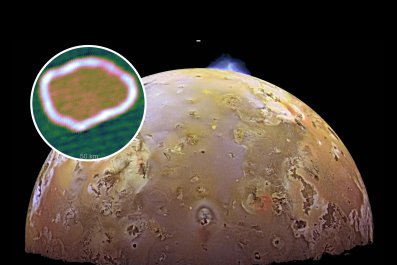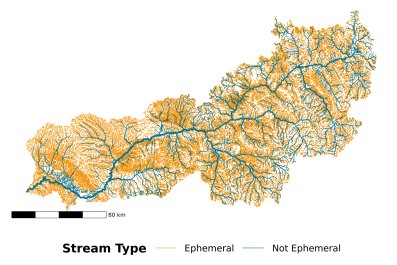New 3D visualizations of the famous Pillars of Creation have been created, using images snapped by both NASA's Hubble and James Webb space telescopes.
By combining data from the older and new space telescopes, researchers at NASA's Universe of Learning at the Space Telescope Science Institute (STScI) in Baltimore created this detailed 3D video.
This marks the most comprehensive and intricate visualization ever made of this spectacular space landmark.
The Pillars of Creation is a famous phenomenon in a region within the Eagle Nebula, located about 7,000 light-years from Earth, made famous in an eponymous picture taken by the Hubble Space Telescope in 1995. These pillars are a part of the nebula where new stars are being formed, composed of cool molecular hydrogen and dust, and extending approximately three light-years in length.
The four Pillars of Creation, made primarily of cool molecular hydrogen and dust, are being eroded by the fierce winds and punishing ultraviolet light of nearby hot, young stars. Finger-like structures larger than the solar system protrude from the tops of the pillars. Within these fingers can be embedded, embryonic stars. The tallest pillar stretches across three light-years, three-quarters of the distance between our Sun and the next nearest star.
The video shows the huge pillars in both visible and infrared light, and takes the viewer on a tour of various angles of the formation. As the viewer approaches the first pillar, it becomes apparent that the three pillars aren't next to each other, but in fact staggered distances away from us.
"By flying past and amongst the pillars, viewers experience their three-dimensional structure and see how they look different in the Hubble visible-light view versus the Webb infrared-light view," principal visualization scientist Frank Summers of the Space Telescope Science Institute (STScI) in Baltimore, said in a NASA statement. "The contrast helps them understand why we have more than one space telescope to observe different aspects of the same object."
The visualization is based on real data gathered by both the James Webb Space Telescope and the Hubble Space Telescope.
"The Pillars of Creation were always on our minds to create in 3D. Webb data in combination with Hubble data allowed us to see the Pillars in more complete detail," production lead Greg Bacon of STScI said in the statement. "Understanding the science and how to best represent it allowed our small, talented team to meet the challenge of visualizing this iconic structure."
The JWST snaps the universe in infrared light, while Hubble sees in visible light, allowing for a detailed and varied view of the pillars when combined. The infrared sensitivity of the JWST allows the scientists to peer inside the dust of the pillars, and spot the young stars lurking inside. Stars in various stages of formation can be seen in the video, ranging from a brand-new star and a jet of material being flung out of a new star in the left pillar, as well as a young protostar in the central pillar.
"When we combine observations from NASA's space telescopes across different wavelengths of light, we broaden our understanding of the universe," Mark Clampin, astrophysics division director at NASA Headquarters in Washington, said in the statement. "The Pillars of Creation region continues to offer us new insights that hone our understanding of how stars form. Now, with this new visualization, everyone can experience this rich, captivating landscape in a new way."
Do you have a tip on a science story that Newsweek should be covering? Do you have a question about the Pillars of Creation? Let us know via science@newsweek.com.
Disclaimer: The copyright of this article belongs to the original author. Reposting this article is solely for the purpose of information dissemination and does not constitute any investment advice. If there is any infringement, please contact us immediately. We will make corrections or deletions as necessary. Thank you.




